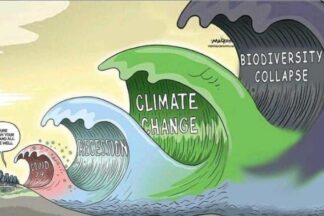This post is part of a series where I look at and into the true cost of certain goods and services. This time I’d like to look into the True Cost of all types Transport and Mobility: road, rail, aviation and water. The question therefore is: What are the total costs – the True Cost, i.e. including what is commonly called ‘externalities’ – of the different types of transport we use globally, both for passengers and for freight? Or if you prefer: how do different types of transport compare to each other when it comes to ‘collateral damage’?
Spoiler alert: It is really quite complex and rather diverse. And: public infrastructure investments and maintenance costs play a significant role in it.
This post is part of a series where I look at and into the true cost of certain goods and services. When in the previous post I looked at subsidies and the True Cost (associated with the True Price) for oil and gas, this time I’d like to look into what we know about the True Cost of Energy. Not just about fossil fuels, but indeed across the breadth of the energy spectrum.
The question therefore is: What are the total costs – the True Cost, i.e. including what is commonly called ‘externalities’ – of the
different types of energy we use globally?
Spoiler alert: It's very interesting - and also a bit suprising and counter-intuitive.
This is the first of a series that will look at and into true cost of certain goods and services. Cash subsidies thereby is one component, but certainly not the only one relevant one – indirect subsidies (e.g. in the form of environmental degradation or similar) need to be considered also. In this particular post, I’d like to focus on Oil & Gas subsidies, fossil fuels' True Cost, and what we know about these. What we already also learn: comparing apples to apples won't be easy.
True Cost calculations are only ever 'best available efforts', and much data remains missing or speculative at best. This is an issue we will encounter again also once we'll look into renewables, or indeed other kinds of industries outside of energy.
Measuring Biodiversity, in terms of baseline (status quo), progress, and deliverable targets, is not a simple thing. Collateral damages are a serious risk.At the same time though, some companies use outcomes of tools, which where never intended to deal at all with biodiversity, as proxy vehicles. This of course raises the question: Where are we with tools, programmes, and measurement systems for biodiversity? Hereafter a look across what I found to be having (some) teeth - also in comparison to the more popular climate change topic. These are: TNFD, SBTN, as well as two management tools that might be helpful, FFFBB and BIA.
Ask: If you are aware of others initatives 'with teeth' as of of writing (November 2021): do let me know and I’d be happy to list them also. Thank you!
Nearly a year ago I wrote about how the terminology we use abstracts from the fact that there are living and sentient human beings doing 'supply chain' work. Listening to a recent podcast it dawned on me that language can be just as useful to gloss over the seriousness and impact of scientific facts. And the resulting necessary actions. Climate Change vs Climate Emergency? Green energy vs renewable energy vs clean energy? Hence, some more thinking about the role of language.
Knowledge and data are two interesting entities: essential for decisions at any one time. And yet evolving with time. And with that, decisions taken some time ago, possibly decades earlier, may prove flawed – in hindsight.
But what if years down the road these insights are resurfaced and either proven to be partially or fully inaccurate? What if the nuggets are suddenly being used in a context that has shifted significantly since? What if our best intended and best-possible informed statements of the past are called out years, decades later?
A few thoughts on this dilemma.
The KISS Principle is a design principle that stems from the 1960.
It originated in engineering and its view point is that most systems work best if they are kept simple rather than made complicated; therefore, simplicity should be a key goal in design, and unnecessary complexity should be avoided.
But what about complex systems such as nature?
How simple can we go before oversimplification results in incomplete, or biased data? Before absence of consideration of relevant factors inherently lead to regrettable substitutions? And before we willingly accept that there will be collateral damages to a decision, without knowing (or wanting to know) of what nature and in what order of magnitude these may be?
One example that illustrates where this challenge may rear what is its ugly head: upcoming Swiss political referenda on agricultural practices.
Reducing humanity’s footprint on this planet is a journey of decisions.
Some of them tough, some of them very clear. And some of them – let’s just say: with very limited available data.
The journey we’re on, is the proverbial Designer’s Paradox. More scientifically speaking of course, we are faced with the ever lasting conundrum of Regrettable Substitutions.
So: Is there a best possible AND least bad option (combined) at this very moment?









